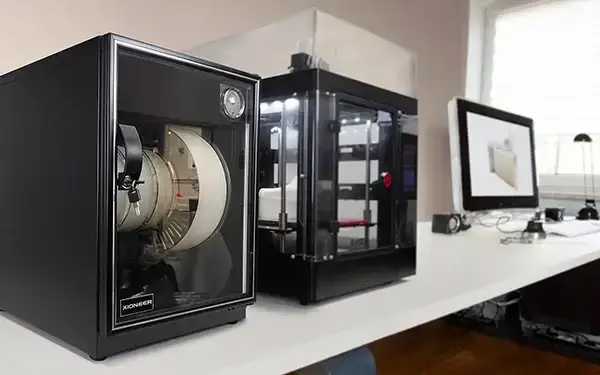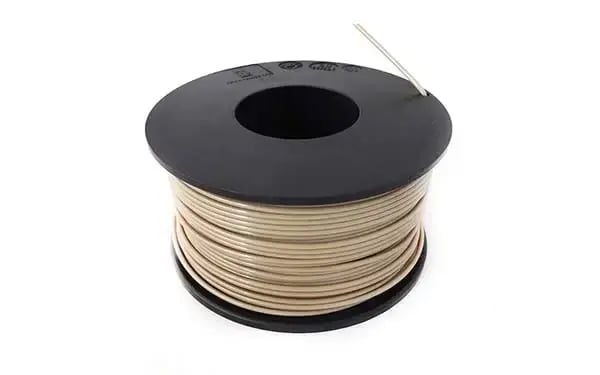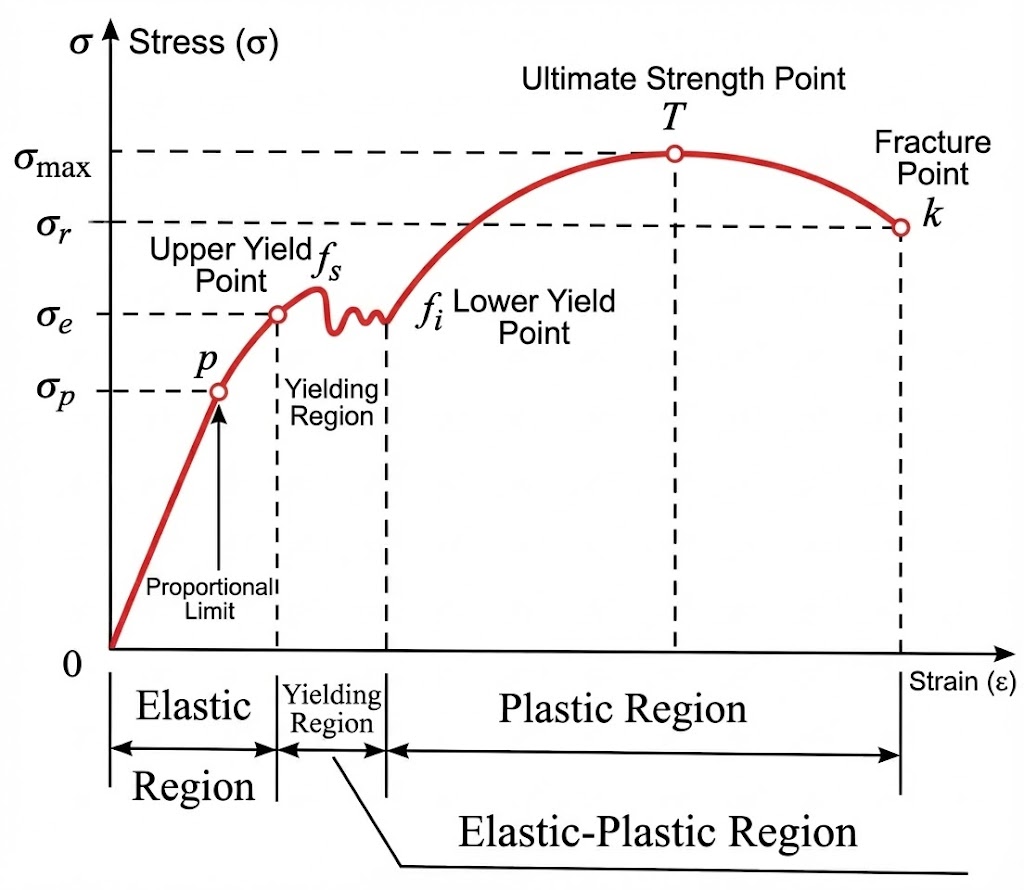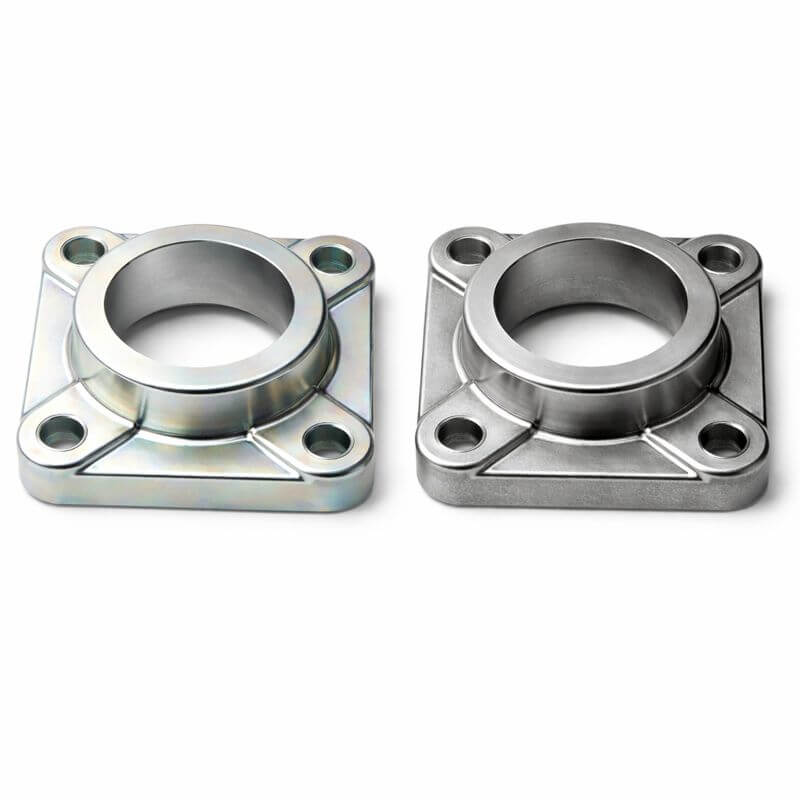2 min read
Young’s Modulus: What It Is, How It’s Calculated and Why It Matters
Young’s modulus, also known as the longitudinal modulus of elasticity, is one of the most important mechanical properties of materials. It is used...

The PAEK (polyaryletherketone) family, of which PEEK is a member, is known for its high thermomechanical properties and is at the top of the list of high-performance polymers.
It first appeared in the late 1970s and industries such as automotive, aerospace and medicine quickly adopted it for its excellent performance.
If we observe its molecular shape, we can see that it is a semi-crystalline polymer. This means that when the material melts, the heat aligns the molecules in a certain way until the material hardens completely at room temperature.
It means that even when the temperature rises, the material still performs very well. This semi-crystalline structure has many advantages, but as a disadvantage it must be pointed out that in the field of additive manufacturing it makes printing much more complex, as it is a very technical material that requires experience, the right skills and 3D printers capable of maintaining stable some extreme printing conditions.
PEEK filament is one of the best materials for 3D printing in terms of final part performance, it has no colour and some of the best possible results of commercially available thermoplastics are achieved with it. However, it requires very sophisticated printing equipment and considerable technical skills by the printing staff.
PEEK has features that are of interest across many engineering and industrial sectors: its mechanical characteristics combined with its extreme lightness as well as its low electrical and thermal conductivity are contended by many sectors, let's look at some of them:

PEEK polymer can be CNC-machined or 3D-printed into almost any shape and can be used as a wire coating on solid or braided conductors because it is wear-resistant. However, its use is also suitable for dynamic parts, offering excellent performance and lightness in an industry where each gram can affect the final application.

This polymer is used in this sector mainly in cable protection and prototyping, as it represents a lighter alternative for cable shielding than other options. Its lightness translates into lighter and less polluting cars. When a new generation of electric cars reaches the market, PEEK improves the performance of the electronic components in the vehicle.
PEEK polymer is also used in the medical field as it has several useful properties in this area. It is perfect for moving catheters through the body because it is very rigid and can only bend in a very limited area. PEEK is used in medical implants too because it is a high-tech biomaterial.
The use of this material leads to an improvement in performance that translates into several advantages. These include stopping corrosion, reducing friction, the ability to handle higher loads, higher speeds, and extreme resistance to oil and gas and chemicals. In addition, PEEK offers an HDT glass transition temperature of 0.45 MPa 180°C (356°F).
In general, designing for 3D printing has fewer constraints than traditional methods. Flexible machining allows easy printing of even the most complicated shapes. Engineers can increase system performance while reducing costs.
In contrast, the intrinsic qualities of metal make it difficult to create complex freeform shapes such as curves or fluid patterns.
These strong and lightweight thermoplastics that can be 3D printed or CNC machined are very interesting from a technical and innovative point of view: the specific weight of PEEK (1.3 g/cm3) is one sixth that of steel and half that of aluminium. The weight reduction reduces maintenance, logistics and installation costs. A thermoplastic part can be six times lighter than an additively manufactured metal part.
Product development uses 3D printing or CNC machining with thermoplastic material because it is more energy-efficient than any other processing with metal. Thermoplastics can be melted, hardened, and again melted, hardened, etc. They never turn into 'waste'.
A lot. It is a printing process that has many stringent parameters to be respected. Meeting these parameters requires very robust, high-quality, high-temperature professional 3D printers, which in many cases are specifically designed to print only these high-performance materials.
If PEEK filament is used incorrectly, it may cause a number of problems. When you decide to start 3D printing with PEEK material, you should evaluate the advantages and disadvantages of applying the material. Here are 5 tips to avoid inconveniences and unsatisfactory results.
PEEK should always be stored in a cool, dry and dark place until use. In this way you will maintain the quality of the material and ensure that the printing process proceeds as planned.

Drying the Peek filament before printing is essential (here is an example of a professional Xioneer DryBox EZ dryer).
PEEK reacts very poorly to temperature changes, even slight ones. Here are a couple of cautions:
First, check that your printer is able to maintain a constant chamber temperature.
Second: you need an enclosed construction chamber. PEEK can be 3D printed at temperatures between 370° and 450° Fahrenheit. The temperature of the build plate must always be at least 120°. PEEK 3D printing works in the same way as other types of 3D printing: remember that for all FDM materials, the slower the printing speed, the more accurate the final product.
Even if your printer is designed to print PEEK and can handle temperatures, install it in any case in a place where there are no sudden changes due to heating/cooling or similar phenomena.
During PEEK printing, you may see black specks. There are several factors that can cause this problem. It could be because PEEK is a dirty material, but often it also depends on the quality of the printer you are using.

Keeping it cleaned significantly increases its service life and improves printing results.

A safe system to fail PEEK printing
During the PEEK printing process, crystallisation can sometimes fail. If a part has a brown spot instead of beige, it could mean that the crystallisation was performed incorrectly. If the printed object has different colours, it could be an indication that the temperature was not controlled well enough during realisation.
Because it is an expensive material to produce and production volumes are limited. Although it is true that it is an expensive material, it is also true that PEEK has much better properties than other thermoplastics. This means that it can be used for applications that would never be possible with other thermoplastics. In conclusion, PEEK is an expensive material, but it is worth the difference.
The addition of carbon fibre to Peek increases its mechanical properties even more, discover them here

2 min read
Young’s modulus, also known as the longitudinal modulus of elasticity, is one of the most important mechanical properties of materials. It is used...

3 min read
Galvanisation is one of the most effective and widely used surface treatments for protecting steel and other metals from corrosion, oxidation and...

2 min read
VALOI, a brand of the Finnish company Kameratori Oy and specialised in film-digitalisation systems for the home market, has started a collaboration...